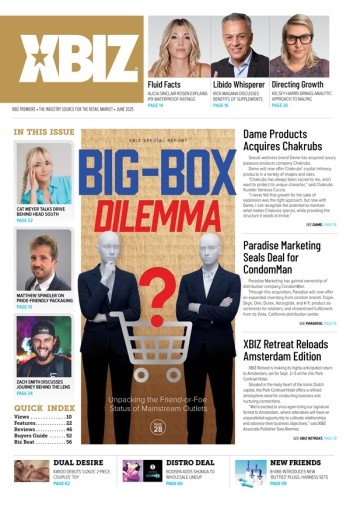When done properly, a hub site can be a real moneymaker and a traffic builder in its own right. In fact, once you build one, you just may wonder why it took you so long to take the plunge. It might sound like a difficult project at first, but in this tutorial you will learn how to build your very own hub site in a single afternoon.
Step 1: Gathering Your Sites Together
What kind of sites do you own? Whether you are a free site webmaster, a link list operator, paysite owner or even if you run affiliate programs, a hub site can be beneficial to your business in many ways. Gather up a list and take inventory of all the different types of sites and programs you are currently operating. It doesn't matter if you have a mix of sites, just so long as those sites are all aimed at the same general target audience. It is a good idea to pool together surfer-oriented sites into one hub and B2B-type sites like affiliate programs into another hub, but then link both together with text links at the bottom of the page. The idea here is to bring it all together in an organized fashion so you can maximize your traffic and increase productivity. As you make your list you can categorize the different projects in a number of ways: by site type, as suggested above, by niche or by any other structure you think would best suit your site.
Step 2: Decide How You Want the Hub to Look
Building a hub site doesn't have to be a huge project. The site itself can be simple; some hub sites consist primarily of lists of links to sites, galleries, programs and pages. You've probably seen them when you've typed in a dot-com only to find a list of other links instead of the page that you wanted — that is a type of hub site. Other hubs are more extravagant and more like a portal; complete with its own design, a unique logo that ties them all together, maybe even a fancy graphic-based menu that breaks down niche categories to make surfing the hub even easier.
A hub site can be just an organized breakdown of the sites that you run or it can be a directory complete with titles, descriptions and even graphic images if it suits your needs and time constraints. The amount of time that you spend on designing your hub site is up to you and depends upon your time and your budget. If you do your own in-house graphics, you may want to whip something up to make it look professional. If your network of sites is rawer, a little rough around the edges, then your hub should probably reflect that idea as well. Sketch it out on a piece of paper and make sure that there's room in your initial design to encompass all of your projects.
Step 3: Think About Navigation
If you have a lot of sites, galleries or pages to be listed on your hub you will definitely want to think about navigation. Ease of use is important here — you aren't building a circle jerk, you are instead building the opposite. Think of your hub site as a sort of site map that connects all of your sites, galleries, pages and projects together — a network map, if you will. You can separate different categories by niche. For example, if you have a network of paysites you could feature a section of boob sites, a section of porn star sites and a section of fetish sites — whatever niches you currently promote. The same goes with galleries or blog sites; if you have multiple options, separate them by niche and list them either alphabetically or separate them even further into softcore/ hardcore. Each hub site is unique so there's really no right or wrong way to do this. It all depends upon you, your sites and what you want to get out of your hub site.
Step 4: Create Your HTML Page
Now it's time to start building your site. Keep it basic and very simple — don't overdo your search-engine optimization; don't spend a lot of time writing keyword lists for your meta tags since the site itself — the listings of your various projects gathered together — will be more than enough fodder for the engines. Anything else would probably be overkill.
Make sure that your HTML is created to W3.org standards. If you're going for a nice clean site — something that the engines, directories and your traffic will feed off of — now is the time to ensure that the site is well-built and is accessible by everyone. In fact, you should go to visit W3.org and utilize the HTML Validator to ensure that your code is valid. If you are using style sheets, check out the CSS Validator as well. There's nothing worse than creating an awesome site in Microsoft Internet Explorer only to find out it looks like hell in Firefox or Safari. Once you have your first draft down, take a look at what you have created — try surfing it yourself — and make sure that it's easy to use, simple to follow and would be something your site's visitors would want to use in order to navigate your entire online portfolio.
Step 5: Link to Your Hub Site
Once your hub site is complete and you upload it to your website, you can start building links to the hub from your online projects. This is an important and crucial step. The cross-linking that happens between you and your hub site is very beneficial to all sites within the hub network. This is why it is so important that you build a clean and "honest" hub site — you wouldn't want your other sites to be penalized for linking in with a site that wasn't.
A hub site is different from a traditional link list or other type of reciprocal link trade in that it is a "natural" listing and organized offering of all of your sites. Because of its structure and layout, it will get a much better reception in the search engines than other spam-like methods used in the past. You get the benefits of the old reciprocal link exchange, without the negatives that are sometimes associated with linking to outside sites that might not necessarily adhere to search engine rules and policies.
Other Ideas: Expanding on Your Hub
As mentioned, you will want to keep consumer-based sites separated from business-based sites in your hub listings. In addition, you may want to create separate hub sites for specific site types — such as one hub for blogs, another for link lists, another for gallery pages and so on. Experiment with the single central hub at first and see how it works, then expand, always making sure to link all of the hubs together even with just a single text link at the bottom of the page to keep the network together. You could create separate hub sites based on niche, based on type or cost of membership — the possibilities are endless.
While you will be able to build your initial hub site in just a few hours, the overall concept of hubs and the benefits gained from expanding upon them will likely keep you busy for weeks, months, even years to come if you do it right. The initial build will grow and evolve, just like your business. Today you start by planting that first seed, by building that first page. The little bit of work you do to start your first hub site in a single afternoon will continue to pay off for a long time to come.





